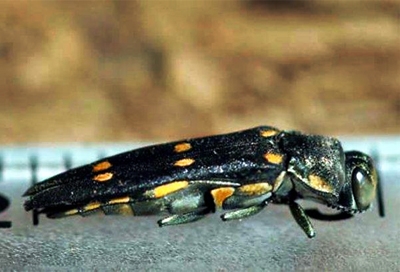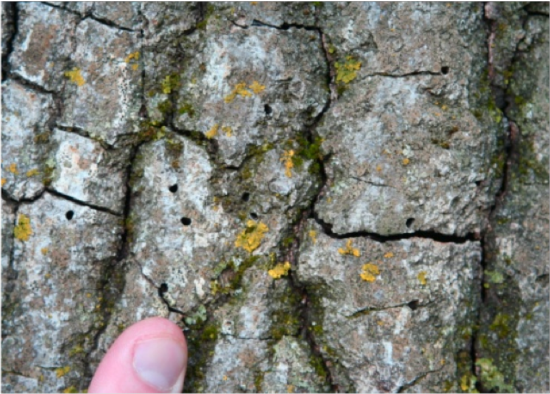Goldspotted oak borer continues to spread
The invasive beetle, goldspotted oak borer (GSOB), has been found in the mountain community of Sugarloaf near Big Bear in San Bernardino County, reported the Chino Champion. The detection causes concern for other nearby communities where oak trees are prized.
All stages of the insect - larval, pupal and adult - were found underneath bark in dying black oak trees on private property. GSOB is a native of Guatemala, southern Mexico and southeastern Arizona. It was first collected in San Diego County in 2004. To limit the pest's spread, officials ask Californians not to transport firewood from one location to another.
"It realistically should be treated like a quarantine situation," said Doug Yanega of the UC Riverside Department of Entomology. "All it takes is a few people who don't know any better or think the rules don't apply to them to infest new areas."
The Chino Hills area has nearly 4,000 oak trees in parks, landscaping and parkways, not including trees on private property and city open space.
"The goldspotted oak borer posts an unprecedented threat to native oaks in Southern California," said UC Cooperative Extension specialist Mark Hoddle, director of the the Center for Invasive Species Research at UC Riverside. "Hiking trails and campsites have been closed because of the risk of branches dropping from dead trees."
For more information about GSOB, see the UC Cooperative Extension GSOB website.


